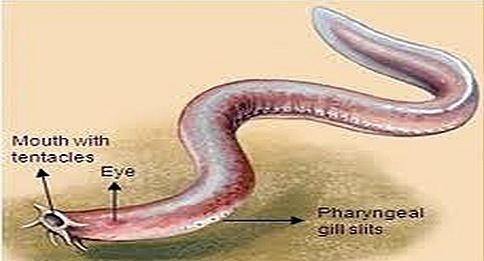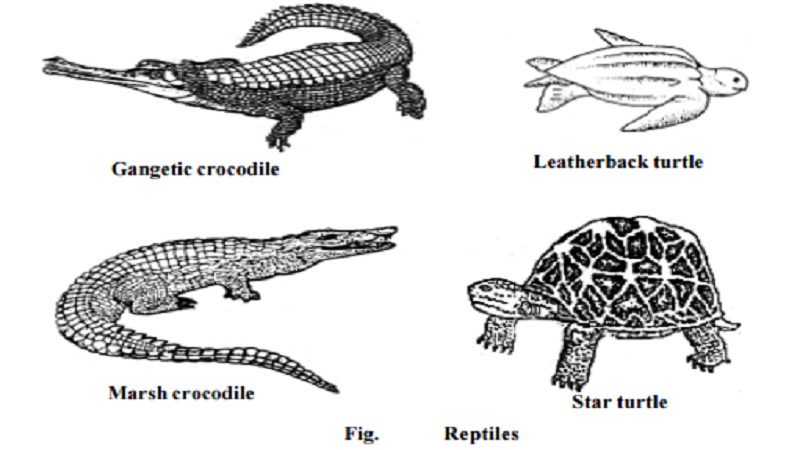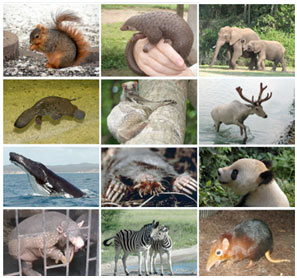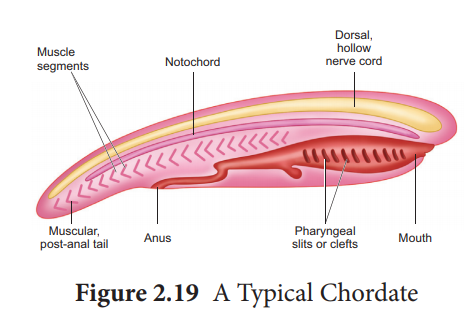CBSE Class 11 Biology Chapter 4 Revision Notes Part 2
Chapter 4: Animal Kingdom Revision Notes Part 2
The Animal Kingdom science is immensely vast and diverse. Every animal has its own unique characteristic. Depending on all these characters, it is further classified into various other classes. Classification Of Animals Into Various Classes: The subphylum Vertebrata are further divided into various classes such as Cyclostomata, Pisces, Aves, Reptilia, and Mammals. The classes are as follows:
Class – Cyclostomata
They are named Cyclostomata due to the presence of a circular mouth. They are parasitic and are the only living vertebrates with true jaws. The body of a Cyclostomata is round and elongated. Their skin is very soft and smooth, and the scales are absent. Their exoskeleton and paired appendages are absent too.The notochord is present throughout its life, and its brain is visible. Cranial nerves of about 10 pairs are present. Their hearts are made up of two chambers. They have separate sexes and develop directly or indirectly. E.g. petromyzon and myxine.
Class – Pisces
These are aquatic, jawed vertebrates with specific organs required for respiration, circulation, and excretion. These organisms cannot regulate their own temperature. The body of Pisces is usually streamlined and divided into head, trunk and tail. The tail helps in swimming. The internal organelles are protected by thick scales all over the body. Gills help to respire. These cold-blooded organisms have a closed type of blood circulation. Sexes are separate, and fertilization may be external or internal. The heart is two-chambered. E.g., tuna, rohu, sharks etc.
Class – Amphibia
Amphibians are vertebrates that can survive on both land and water. They are cold-blooded animals, and their body is divided into head and trunk. The tail may or may not be present. They have two pairs of limbs that help in locomotion. They respire through their lungs and their skin. They have no paired fins. The heart of an Amphibian is three-chambered, and they possess 10 pairs of cranial nerves. Sexes are separate, and they are fertilized externally. Amphibians develop indirectly through metamorphosis. E.g., frogs, toads, salamander
Class – Reptilia
Reptilia are cold-blooded organisms belonging to the phylum Chordata of the Animal kingdom. Being the first class of organisms to adapt to life on land, these are creeping and burrowing terrestrial animals with scales all over their body. They have dry and rough skin, and they do not have any glands. They respire through their lungs. Reptilia have a three-chambered heart, and their skull is monocondylic. Two pairs of pentadactyl limbs are present. Their nervous system comprises 12 pairs of cranial nerves. They possess a typical cloaca, and fertilization is internal. E.g., turtle, garden lizard.
Class – Aves
Class Aves is made up of all the birds of the Animal Kingdom. They are warm-blooded animals, and their forelimbs are modified into wings to help them fly. Their hindlimbs help them to walk, hop and swim. Birds have an endoskeleton that is bony with long pneumatic bones. The feathers prevent their heat loss, and their legs have epidermal scales.
The lower and the upper jaws are modified into a beak, and they have great eyesight. Birds respire through spongy and elastic lungs, and they are made up of 12 pairs of cranial nerves. They have a four-chambered heart. All the birds are oviparous, and their fertilization is carried out internally. E.g., Parrot, Crow, Ostrich.
Class – Mammalia
Mammals are the most evolved organisms of the Animal Kingdom. They are characterized by the presence of a mammary gland through which they feed their younger ones. These are warm-blooded animals and are found in most habitats. Their skin possesses both oil glands and sweat glands. Mammals are heterodont and have a dicondylic skull. They respire through their lungs, and the ear comprises 3 middle ear bones.
The brain of mammals is divided into the cerebrum, cerebellum, and medulla oblongata. The nervous system comprises 12 pairs of cranial nerves, and they also have a very advanced diaphragm. Mammals are viviparous, and their fertilization is internal. E.g., Kangaroo, camel, tiger.
Phylum – Hemichordata
The phylum consists of a small group of worm-like marine animals, having organ system level of organization. They are bilaterally symmetrical, triploblastic, and coelomate animals. The body is cylindrical and is composed of an anterior proboscis, a collar, and a long trunk. The circulatory system is of open type. Respiration takes place through gills. The proboscis gland serves as the excretory organ. Sexes are separate, and fertilization is external. E.g. Balanoglossus, Saccoglossus.
Phylum – Chordata
Phylum Chordata involves all the vertebrates, i.e., animals with a backbone, and invertebrates, i.e., animals without a backbone. It comprises a long, cartilaginous notochord, which runs between the digestive tract and the nerve cord. It supports the nerve cord and is replaced by the vertebral column after the embryonic stages. The body of a chordate has an organ-system level of organization and is bilaterally symmetrical. The body structure is actually complex with a triploblastic, coelomic body. They possess a post-anal tail and a closed circulatory system. The Phylum Chordata is divided into 3 subphyla: urochordata or tunicata, cephalochordata, and the vertebrata.
The Subphylum Urochordata and Cephalochordata are collectively referred to as the protochordate of the Animal Kingdom, and they are generally marine. In Urochordata, the notochord is seen only in the larval stage and disappears as they grow, while in Cephalochordata, the notochord is present throughout its life.
The notochord is present only during the embryonic period in the subphylum Vertebrata. In adults, it is replaced by a bony vertebral column.
Chordates and Non-Chordates
-
Chordates – A notochord is present, and the central nervous system is dorsal and single. A heart is present along with a tail. The pharynx of the chordates is perforated by gill slits.
-
Non-Chordates – The notochord is absent, with the central nervous system being ventral and double in size. The gill slits are absent in the non-chordates. The heart is dorsally located. The tail is absent in these.
Sources:
- Classification of Animal Kingdom. https://byjus.com/biology/classification-of-animal-kingdom/ Accessed 18 Dec, 2021.
- Animal Kingdom. https://www.vedantu.com/biology/animal-kingdom Accessed 18 Dec, 2021.




